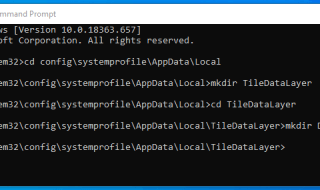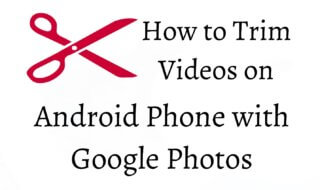Web Accessibility is becoming a crucial part of life on the Internet. What is it, and why is it so important? That’s what we’ll be answering in this article.
Let’s start with what Web Accessibility is. It is the process of systematically making the Worldwide Web accessible to people who suffer from disabilities. Researchers have reached a consensus on the statistics, and they indicate that almost a quarter of the US population suffers from some disability. Globally, the number is approximately one billion users. With the Internet Society’s mantra being “The Internet is for everybody”, an eighth of Planet Earth’s population requires assistance with using it normally. Thankfully, the fight for Improved Web Accessibility has been largely successful, which is what we’ll get into next.
Contents
The First Steps Towards Web Accessibility

Removing barriers and making digital content accessible to every single Internet user is the foundation of Web Accessibility. Before laws were put into place to prevent discrimination and improve inclusivity, people living with disabilities had nowhere to turn to. From 1973 onwards, things have taken a turn for the better. Based on the Rehabilitation Act of 1973, the US Government required in 1998 that Federal agencies would make their electronic and information technology (EIT) accessible to people living with a disability.
Web Accessibility’s History
As mentioned above, it was in 1973 that the Rehabilitation Act was passed. This piece of legislation ensured that the needs of the disabled would no longer be ignored or trivialized. The Rehabilitation Act prevented all government agencies from behaving discriminatorily towards all those living with a disability and experiencing a barrier online. In the battle for Web Accessibility, this was one of the most important victories.
The next step forward came in 1990 when President George H.W. Bush signed into law the ADA (Americans with Disabilities Act). This law ensured that any discrimination against disabled people is illegal under Title 3. The emphasis was on “discrimination in public places”. With the Internet being considered a public domain, the Department of Justice joined the charge towards Full Web Accessibility.
Further amendments and improvements to these laws came in 1998. The Rehabilitation Act had its Section 508 changed to include Web Accessibility. The following year, in 1999, the Web Content Accessibility Guidelines (WCAG), were established.
The First Web Accessibility Lawsuit
Section 508, ADA, and WCAG guidelines all consider the Internet a public place. When Juan Carlos Gil couldn’t access the Winn Dixie Stores Inc. website with a Screen Reader, he sued the company and Mr. Gil won the lawsuit. The company had to spend $250,000 on improving Web Accessibility. This was the case on which all other litigation has been based in cases pertaining to Web Accessibility.
Web Accessibility Terminology Explanation
International Laws and Their Applicability
Full Web Accessibility can’t be accomplished without global co-operation and legislation. Every country around the globe has its own rules and regulations when it comes to Web Accessibility. ADA, Section 508, and the Rehabilitation Act are the laws in place in the US, while the European Union relies on EN 301 549 and the UK’s Accessibility Regulations. It’s possible to check the whole list of global policies with the World Wide Web Consortium (W3C).
The Consequences of Non-Compliance
In short, if your digital content doesn’t adhere to these laws, you will be at risk of a lawsuit. The number of such cases has been growing almost exponentially, with more than 11,353 lawsuits reported in 2020. It’s worth prioritizing Web Accessibility because it could cost you a lot if you don’t.
Procedures and Policies
The World Wide Web Consortium, W3C, released its Accessibility Standards in 1999. The 1.0 edition of WCAG guidelines was made up of 14 regulations. A new edition, the WCAG 2.0 regulations, came out in 2008, streamlining the concept into four parts:
In 2008, when WCAG 2.0 was originally established, the following were the four principles:
- Perceivable – This required content to be seen, without any details being left out
- Operable – Users must be able to use websites in different ways
- Understandable – Users must be able to comprehend websites’ contents without complication
- Robust – The technical and assistive technology aspect of Web Accessibility is covered here, with “robust” referring to the assistive tech needed to accomplish this
W3C made further improvements in 2018, with WCAG 2.1 regulations coming out. This is the version that is still active today. According to WCAG 2.1 regulations, there are three categories through which Web Accessibility is determined:
- Level A – The basic level of requirements.
- Level AA – At this level, accessibility can be achieved.
- Level AAA – Your content must be fully and completely Accessible if you want an AAA rating. Every page has to be taken care of, and every nook and cranny of your offering must be accessible to everyone.
It is highly recommended to always keep your content at AA Levels, minimum. If you don’t, those lawsuits won’t be far away.
Disabilities Types
There is a whole range of disabilities and impairments humans suffer from. Here is a list of those covered by Web Accessibility regulations:
- Physical Impairments – Loss of motor functions and partial or full loss of mobility. This type of user may have difficulty using keyboards and a mouse.
- Cognitive Impairments – Users with cognitive issues may have problems understanding or processing information received from the Internet.
- Visual Impairments – Considered the most common form of disability, an estimated 2.2 billion people suffer from some form of visual impairment. Poor eyesight, blindness, color blindness, and other afflictions fall under this category.
- Auditory Impairments – With 2.5 billion people predicted to have hearing issues by 2025, it becomes clear why Web Accessibility is so important. Users suffering from auditory disabilities may experience issues when processing audio-visual data or content.
What are the methods for achieving accessibility?
There are lots of ways to get a WCAG AA rating, but that shouldn’t be the focus for website owners. Providing quality, accessible content is priority number one, which will require you to cater to the needs of all those suffering from the above-mentioned impairments. We have provided you with a list of suggestions that will improve your Web Accessibility, and therefore the reach of your content, service, or product:
- Using images with alt text is recommended
- Caption videos
- Employ Screen Magnifiers and other assistive technology
- Install keyboard-only or mouse-only access
- Offer a wide selection of fonts and font sizes
- Run tests on both the desktop and mobile versions of your content to ensure everything runs smoothly
- Provide transcripts
- Allow color contrast changes
- Provide white spaces in your content for easier navigation
- Use easily accessible formats such as PDF
- Always confirm that all Website forms are accessible
Accessibility solutions’ on the market
Due to the ever-growing number of Accessibility-related lawsuits and the need for more Accessibility Solutions, companies that provide Accessibility are on the rise. The Accessibility tools they provide will protect you and your website from lawsuits and make you WCAG-compliant.
There are quite a few options to choose from when it comes to Accessibility solution-providers. Options such as AccessiBe, UserWay, Adally, and many more are at your disposal. However, AccessiBe is considered the market leader, and has pledged to make the Internet fully accessible by 2025. UserWay is also a quality option. Nearly a million users employ UserWay’s services globally, which is impressive.
If you’d like to find out more about your options when it comes to Accessibility-improving providers, you can check out our reviews at https://bestwebsiteaccessibility.com/reviews/.
All Websites Should Be Assessed for Web Accessibility
Locating and eradicating Web Accessibility issues should be done as soon as you start a website. The best approach is to put yourself in the shoes of the user visiting the website for the first time. Manual remediation of Accessibility issues is possible, but it is costly and takes a long time. Therefore, Web Accessibility providers have created coded programs that will do the same job much more efficiently. These are called batch processors. The most efficient approach is a hybrid one, where both manual and automated Web Accessibility remediation is implemented.
Outcomes
The Benefits
Not only will you be a good samaritan by making your digital content fully accessible, but you’ll also reap a lot of benefits. Primarily, you will be able to avoid lawsuits, which is a big plus. Apart from that, the user experience will be improved after Web Accessibility remediation. Your website will run faster, crash less often, and won’t have any issues switching between desktop and mobile formats. Additionally, your SEO ranking will make your content more visible. SEO rankings are influenced, among other factors, by how accessible content is.
Brands Standing Up for Accessibility
Don’t take only our word about the importance of Web Accessibility – just look at all the corporate giants that prioritize it. Facebook, Microsoft, Google, and Apple are just a few of the many. Microsoft has been providing on-screen keyboards since 2000. Text-speech was added to improve their U.I. Apple, for example, introduced VoiceOver, a screen reader, in 2005. Even their products, such as Apple watches, are accessible.
Take Web Accessibility seriously, and you’ll enjoy all the benefits that come with providing fully accessible content.



